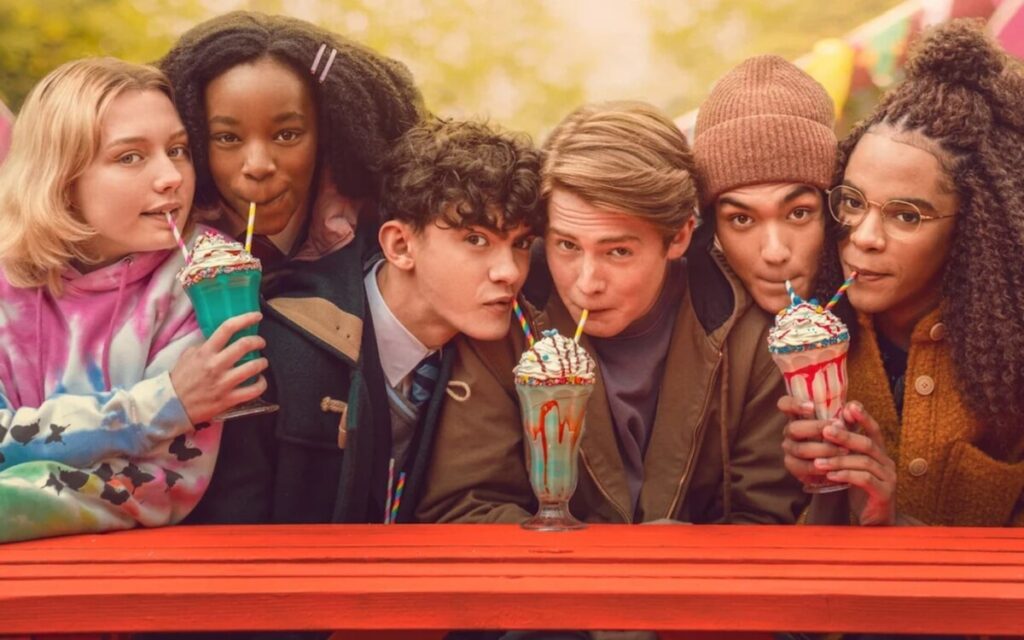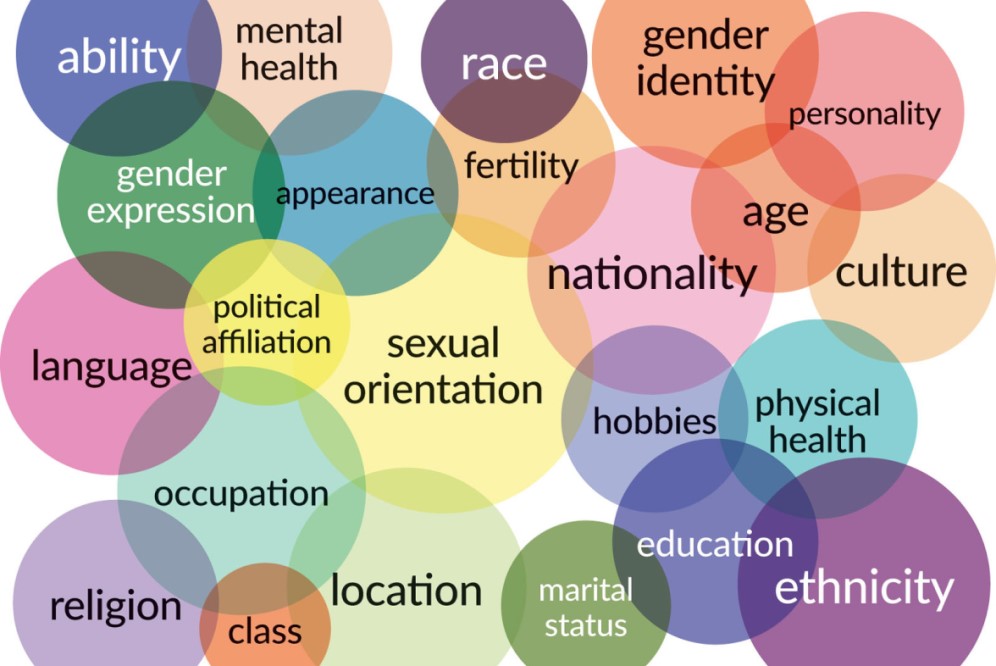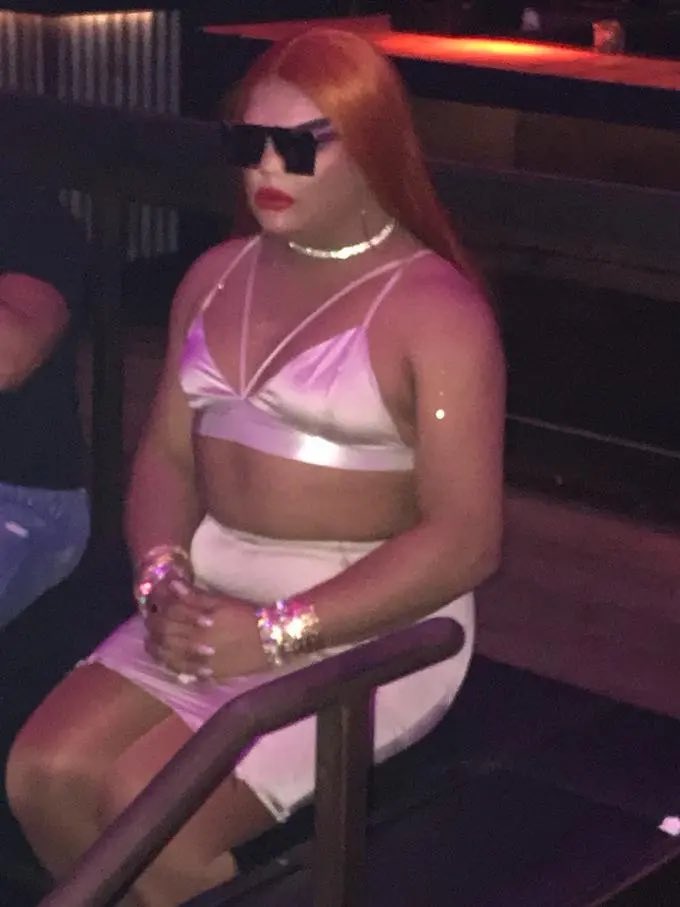Overview
Intersectionality is a method of understanding the way the combination of multiple forms of identity can cause disadvantages that wouldn’t be foreseen otherwise, if these identities were evaluated individually. This wiki entry will primarily analyze intersectionality through media and film as well as social justice issues discussed my term originator, Kimberle Crenshaw.
History

Kimberle Crenshaw is the originator who coined the term intersectionality in 1989. She writes in her dissertation Mapping the Margins about identity politics, and its’s affect on society at the time, as well as today. She described how ignoring differences within groups of people causes problems and tension among groups. In addition, she amplifies that intersectionality is crucial in the way we construct the social world as we must consider how certain systems affect multiple groups of identity.She is a distinguished writer on civil rights, social justice, critical race theory, race, racism and feminist legal theory.
Examples
Intersectionality and Media
There has been great debate over the years in the way we represent identities and take intersectionality into account in today’s media such as social platforms, film, books, shows etc. Many believe that lack of representation in media and or improper representation can affect one’s psyche and or perception of one’s self. In Arnold Avery’s article on intersectionality in social media’s impact on the LGBTQ youth, she conducted polling asking individuals if they felt representative in media, resulting in low number of people responding with yes. Further polling was conducted on whether individuals felt comfortable sharing their identity on social media and a large gap in between heterosexual vs LGBTQ identifying indivisual responses was displayed. People who affiliate with heteronormative identifications have a higher percentage of responses in where they feel they are able to self express in media unlike those who affiliate with queer identities. This being due to lack intersectionality and or inaccurate representation of identities in films, books, art, shows and more.

In Yalda Tehranian article, she gives examples of Films in which lack intersectionality. One Netflix original being Moxie, a narrative film of a young white female high school student who leads groups of students in acts of feminism and gender equality in their school after some dress code issues. Where this may seem like a harmless show about feminism, it decredits black women’s role in the women’s rights movement, as well as lack of incorporation of trans women, POC women, disabled women etc.
Hailey Mozzachio, graduate student at Tulane University wrote about the importance of representation on media. She notes in her article that queer women only make up 1% of characters on TV and overall 10% of deaths. She also calls into question the 1999 film Boys don’t cry, a film about a trans man living in the south who ends up being sexually assaulted and murdered by the end of the film. Not only was this film a glorification of the deaths of queer individuals but its ethics have been questioned as it was directed by a cis straight woman as well as casting a cis woman to play a trans man. Why is accurate representation important? Authenticity? Painting hurtful narratives of queer lives can be incredibly damaging to people who are currently questioning their identity. It strikes fear in young people from pursuing their true selves as well inflicting possible self hatred.

What many conservatives object to is not the term but its application on college campuses and beyond. Conservatives believe that it could be (or is being) used against them, making them the victims, in a sense, of a new form of overlapping oppression. To them, intersectionality isn’t just describing a hierarchy of oppression but, in practice, an inversion of it, such that being a white straight cisgender man is made anathema.
Coaston, Jane. “The Intersectionality Wars.” Vox, 20 May 2019
Jane Coast bring the opposition side of the conversation of intersectionality, demonstrating the misunderstanding that intersectionality is some sort suffering hierarchy in which cis white men are at the bottom of. Understanding the conservative point of view helps further understand that intersectionality is a tool used to comprehend that different entities of one’s life effects each other and therefore change their overall experiences in modern day society. People are not one identity, they are multiple identities and thus that sum is a new identity.

Accurate representation empowers young people, such as the show Heartstopper. A Netflix original of a group of young queer high school students living a mundane life all while embracing and expressing their queerness. This show received great popularity as not only does it include a wide scope of identities but straying away from the “coming out” narrative as well as this “suffering” existence of queer people.
Visual Intersectionality



Work Cited
Arnold, Avery. Intersectionality on the Internet: The Impact of LGBTQ+ Youth on social media. www.reach3insights.com/blog/intersectionality-on-the-internet.
Coaston, Jane. “The Intersectionality Wars.” Vox, 20 May 2019, www.vox.com/the-highlight/2019/5/20/18542843/intersectionality-conservatism-law-race-gender-discrimination
Crenshaw, Kimberle. “Mapping the Margins: Intersectionality, Identity Politics, and Violence against Women of Color.” Stanford Law Review, vol. 43, no. 6, 1991, pp. 1241–99. JSTOR, https://doi.org/10.2307/1229039. Accessed 12 Oct. 2023.
Peter Hopkins. “What Is Intersectionality?” YouTube, 22 Apr. 2018, www.youtube.com/watch?v=O1islM0ytkE.
Tehranian, Yalda. “How to Authentically Represent Intersectionality in Media — Center for Scholars and Storytellers.” Center for Scholars & Storytellers, Mar. 2023, www.scholarsandstorytellers.com/blog/diversity-in-hollywood-the-importance-of-representing-intersectional-identities
The Disability Services Center at UCI. “Intro to Disability + Intersectionality.” YouTube, 4 Mar. 2021, www.youtube.com/watch?v=EgwNzPOYWF8
